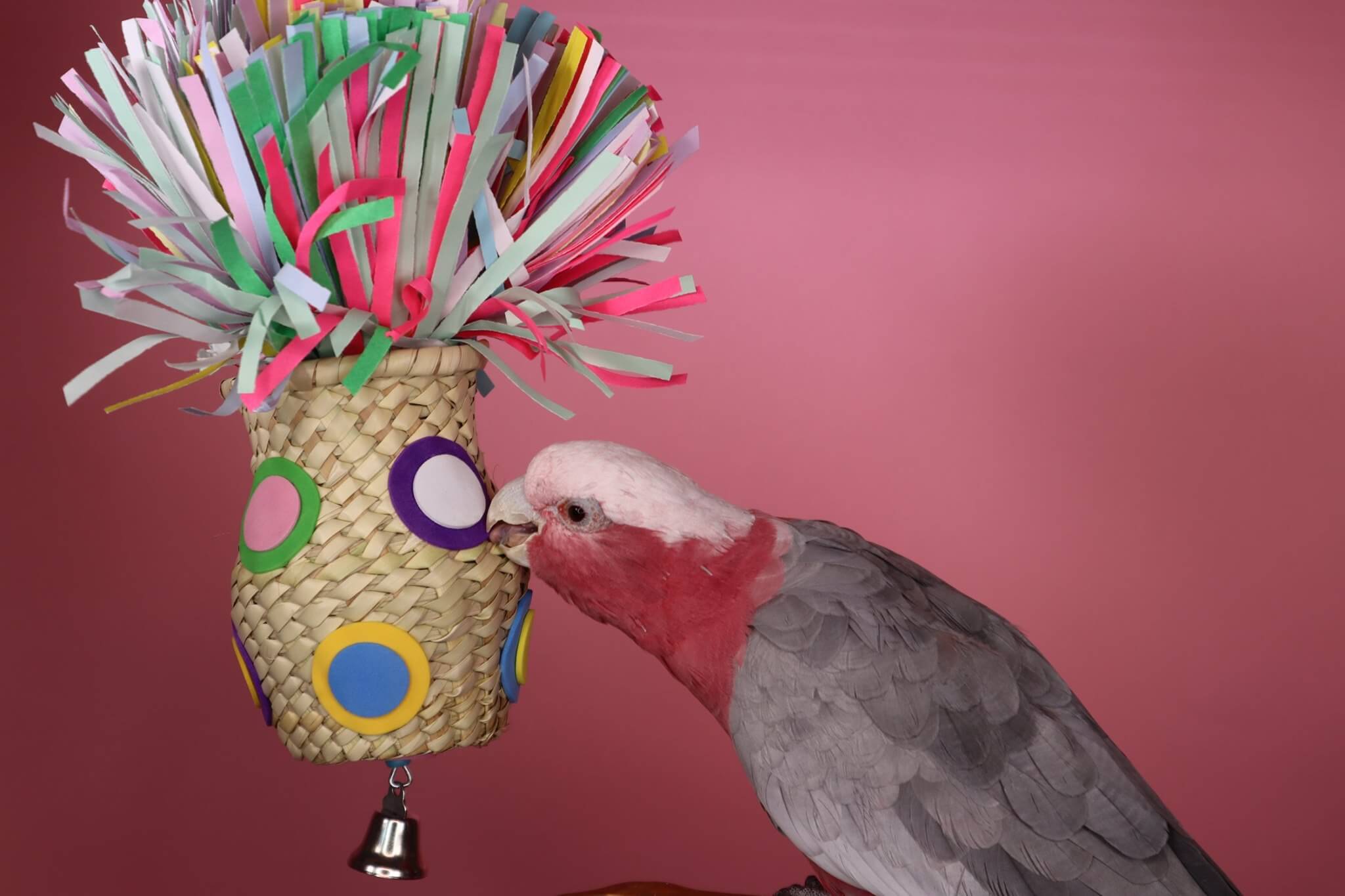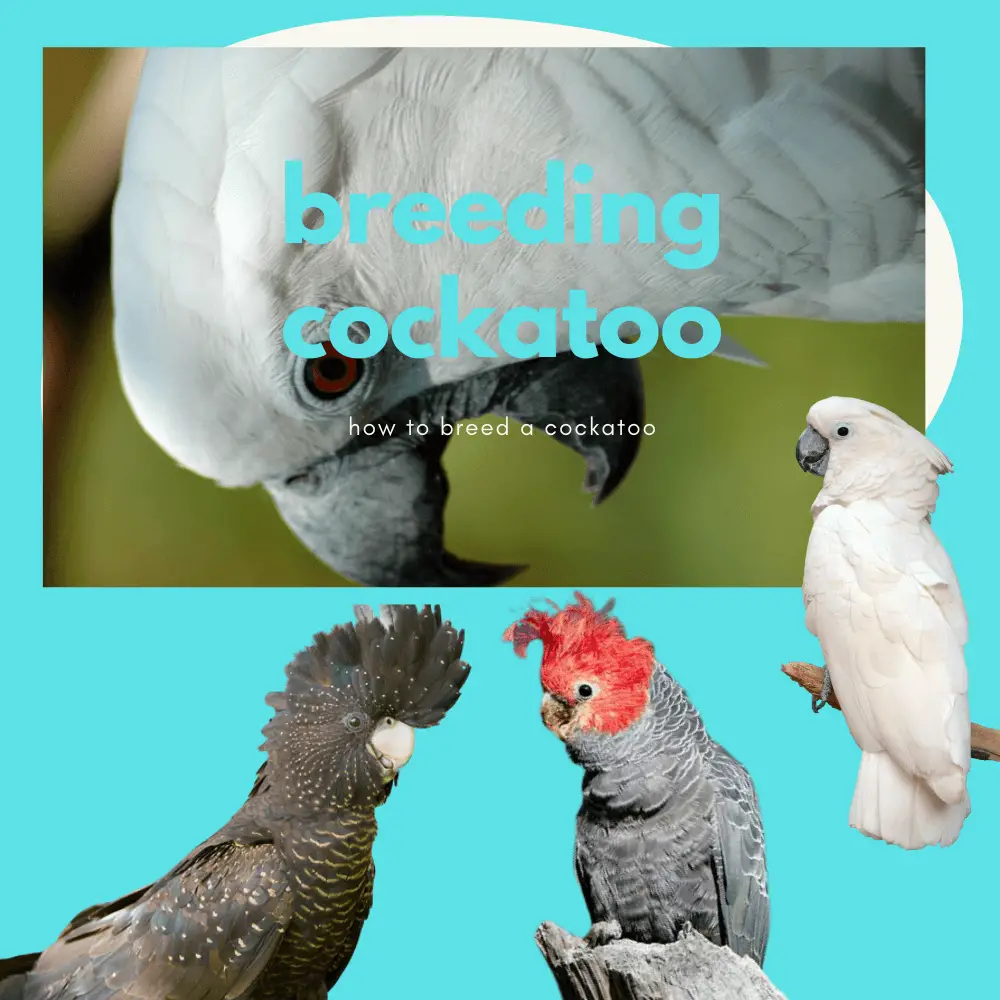
breeding cockatoo: How to breed a cockatoo Raising a cockatoo can be an extremely rewarding experience if done correctly.
But if it’s done badly, you will have a real problem on your hands. A moody, moody teenager is much nicer than a rude cockatoo. It is much easier to properly breed your cockatoo right from the start than it is to solve problems afterward.
are cockatoos good pets

breeding cockatoo
Recognizable by its pink, white, red, or yellow crest depending on the species, the cockatoo is a parrot that arouses enthusiasm.
Extremely intelligent, curious, he has a strong character. Very affectionate, exclusive, he loves to be the center of attention and likes to take control over those around him.
It is, therefore, better to have great availability to raise cockatoos, especially since with age, these birds tend to be more and more possessive and demanding.
It is necessary to offer them the best living conditions in captivity but also to think carefully before welcoming someone into the house because not a pet that is suitable for beginners.
cockatoo cage

cockatoo bird cage
Choose a suitable cage
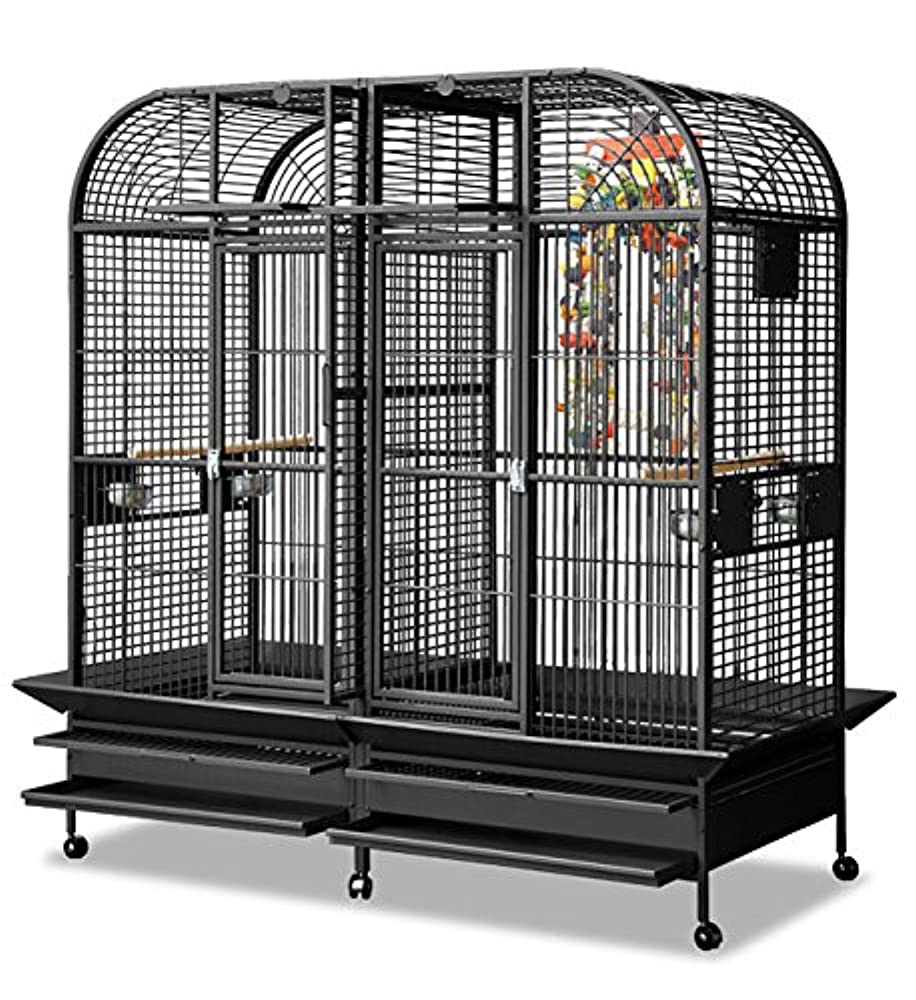
cockatoo cage size
Cockatoos are intelligent and curious birds that need lots of space. Choosing the right cage can dramatically improve your bird’s life. Choose a cage that is spacious and sufficiently secure. Then buy suitable accessories and properly maintain the cage.
Buy a large cage. Cockatoos are not small birds. They must be able to flap their wings and move around comfortably in their cage. At a minimum, it must be 120 cm high and 3 times the wingspan of your bird in width. The cockatoo will be able to move freely inside.
- Always buy the biggest cage that you can afford or that will fit in your living room.
- The wingspan of a cockatoo varies from species to species and some have wider wings than others. Learn about the 20 different species of a cockatoo to know exactly the wingspan of your bird.
Buy a cage with 2.5 cm of space between the bars. Proper bar spacing is essential for your bird’s safety. If they are too narrow, he could get his beak or toe stuck. If they are too far apart, he risks locking his head. A space of 2.5 cm is ideal for cockatoos and other large parrot species
Choose a wide cage: Vertical or tower-like cages are not suitable for cockatoos. These birds move horizontally, not up and down. If possible, choose a wide and deep cage rather than a narrow and tall one.
Opt for a rectangular cage. The shape of the cage matters. A rectangular cage will allow your bird to perform a wide range of movements. On the other hand, a rounded cage will give him less freedom. Choose the first option whenever possible
Make sure you have a good place to put the cage: Cockatoos are social birds that need to interact with household members. Install your bird’s cage in a well-protected part of the room where your family spends the most time.
If possible, choose a warm location with lots of natural light and away from drafts or the comings and goings of people. For example, you can install the cage in a well-lit corner of the living room.
- Cleaning will be easier if you place the cage on a tile, wood, or linoleum floor.
- You can also place the cage on a blanket to protect your floor from stains from water, food, and droppings.
Choose a stainless steel cage. Stainless steel (not another metal) is the best material for a cockatoo cage. Other metals such as zinc and lead are potentially toxic and should be avoided
Make sure the cage door is closed with a lock. Cockatoos are intelligent birds that can easily open poorly designed cage doors.
Choose a cage whose door closes with a lock to prevent your bird from escaping, getting lost, or being attacked by other animals in the house such as dogs or cats.
- If the cage door does not close with a lock, use a carabiner to lock it.
Choose a cage with horizontal bars. It is easier for a cockatoo to walk on horizontal rather than vertical bars. When buying a cage, choose ones that have horizontal bars for your bird to climb, walk, and perch on
Arrange the cage
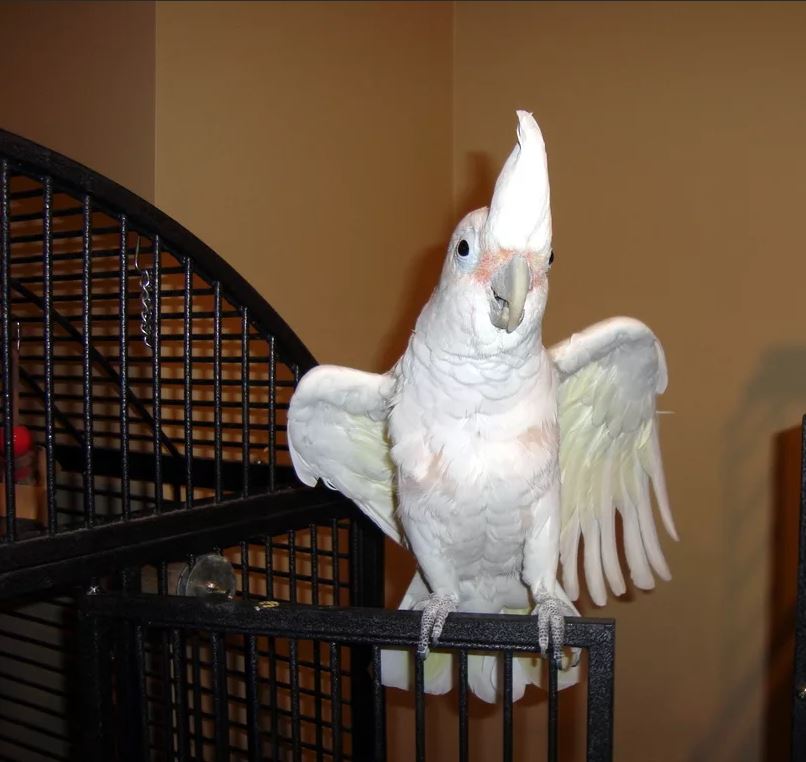
Breeding Cockatoo
Make sure the edges of the cage are not too rough: Once you find the cage that meets your criteria, run your hands inside before buying it. Look for any sharp edges or uneven welds that could hurt your bird and make the cage harder to clean. If you find any fault, choose another cage
Place a birdbath in the cage: You can improve your cockatoo’s personal hygiene with a birdbath. Place a container of water or a ceramic plate about 35 cm wide at the bottom of the cage. Pour lukewarm water into it [9] .
Clean the birdbath daily. If there is any trace of food or excrement in the container, clean it right away.
Install 1 or 2 poles: Your cockatoo will need 1 or 2 perches installed in its cage. Each pole should be about 2 cm in diameter. Place them away from water and food dishes to avoid contamination
Give your cockatoo a few toys: Cockatoos need lots of mental stimulation. The best way to keep them busy is to give them toys. Hang a puzzle in your bird’s cage or make toys that will encourage him to use his beak.
Purchase a liner for the cage: Some cages are sold with a disposable liner that makes them easier to clean. Choose these models or spread a poster or old newspapers at the bottom of the cage.
Maintain the cage
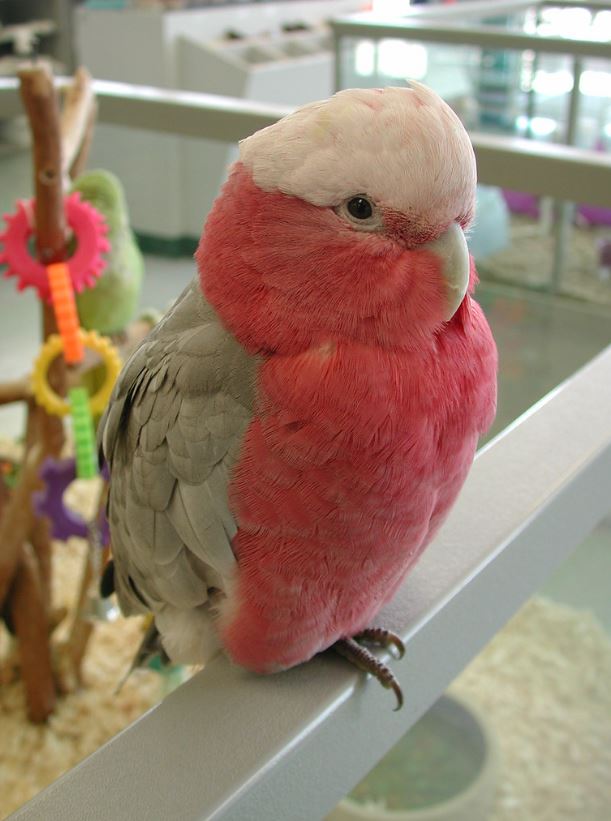
cockatoo in cage
Clean the liner for the cage daily: Regularly cleaning the cage is essential to keeping your cockatoo happy and healthy. Remove the liner daily and discard any droppings or leftover food. Replace a clean liner on the bottom of the cage
Wash water and food dishes daily: Plates can get dirty easily and it is important that you keep them as clean as possible. Take them out of the cage daily and wash them with warm soapy water. Let them dry before putting them back in place
Thoroughly clean the cage once a week: Every week, you should thoroughly clean your cockatoo’s cage. In addition to replacing the liner and washing the water and food dishes, you should clean the cage with warm, soapy water. Also,
- clean toys and perches then vacuum or sweep the bottom of the cage.
- Don’t forget to throw out broken toys or debris from the cage during cleanup.
Umbrella Cockatoo breeding Nesting season – Destroyed Toys and aftermath
SOURCE: Parrot Genie
Cockatoo diet
Buy a high-quality seed specially made for cockatoos and top it off with fresh produce and nuts. The fruits can be fresh or dried. If you give dried fruits, however, make sure that they are organic and without additives.
Dried fruits and vegetables are beneficial because they last longer, which is great for travel. If you wet it with a little hot water just before feeding them, your cockatoo will certainly do the dance of happiness.
Cockatoos parrots get most of their protein from legumes, beans, cheese, cooked eggs, sprouts. From time to time, a small piece of cooked meat or fish can be eaten.
Cockatoo pellets are available if your vet feels that your feathered friend is not meeting their nutritional needs sufficiently. But forgo citrus fruits if you give them granules.
Cockatoo sleeping
how many hours do parrots sleep
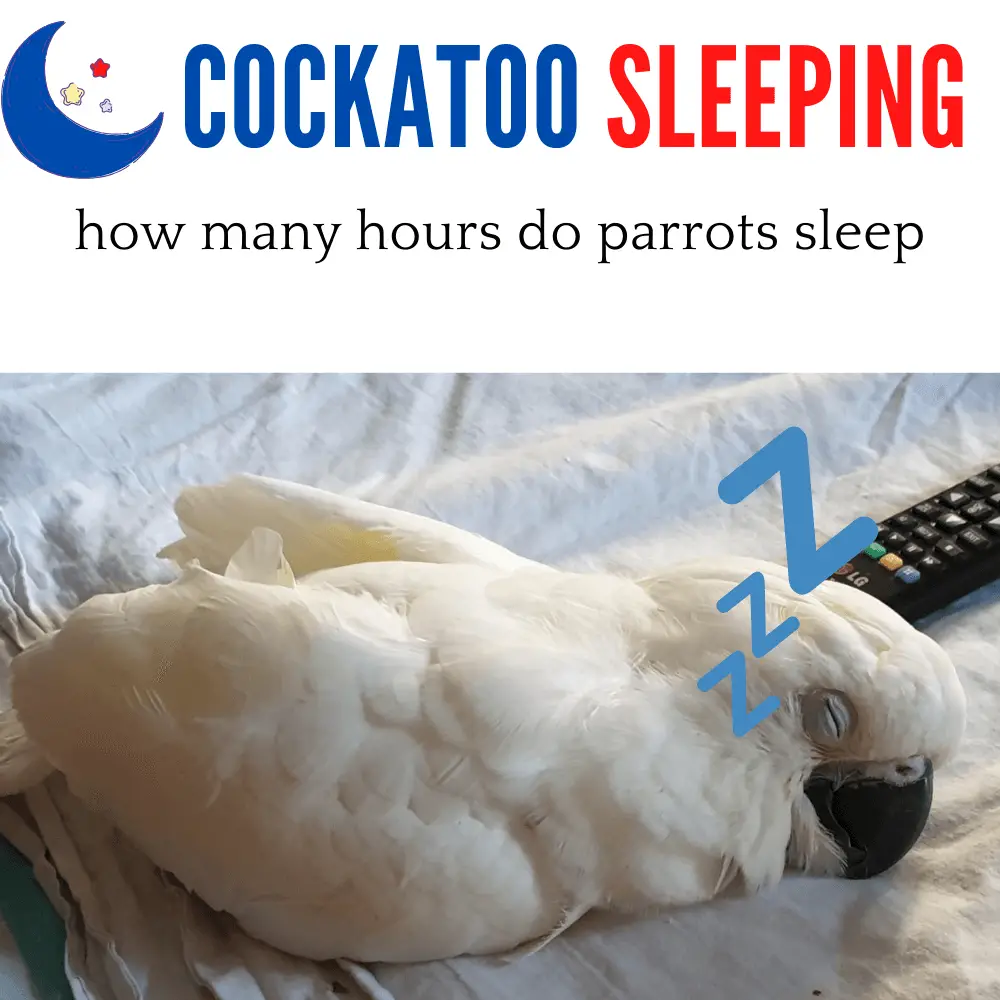
Breeding Cockatoo
Your cockatoo needs exercise to be healthy and happy. Give your cockatoo three to four hours of play outside the cage and at least an hour of interaction with you each day.
The playrooms, specially designed for large birds, are also ideal for your bird to meet its exercise needs. The cage should be large enough that it can move around and accommodate lots of perches and toys.
About 1 meter wide and 90 centimeters deep. Cockatoos love large, shelled nuts, so allow him to slice them open himself to occupy him and provide an outlet for his energy. Your cockatoo should be resting enough, at least 10 to 12 hours in a dark, quiet room.
Breeds of Cockatoos
Cockatoos are very intelligent birds that need a lot of entertainment, enrichment, and challenges. There are many books and videos on the market to teach you how to train your cockatoo to perform all kinds of cool tricks like talking, turning, throwing a ball, and just about anything a dog can do.
Learning your cockatoo’s tricks will not only bond you to him but will ensure that you have a happy, well-balanced cockatoo that doesn’t bite or self-harm.
Leave a television or radio on to keep him company. Plan plenty of puzzles, games, toys, and things to chew on and explore for him to occupy while you are away. Discover our collection of parrot toys by clicking on the image below.
Breeding Cockatoo
Cockatoo Vet
Veterinary needs
Cockatoos can be affected by the same diseases as other exotic birds, but they are particularly susceptible to several of them:
- Psittacidae beak and feather disease is one such disease. It is a virus, often fatal, that attacks the system responsible for creating and maintaining feathers.
- Obesity is also a problem as many cockatoos eat too much fat and don’t exercise enough. Obesity leads to lipomas, or fatty tumors, and fatty liver disease.
- Bumblebee foot is characterized by swelling of the feet and lesions that release a pus-like substance.
- Self-harm and feathering can be caused by a physical or emotional problem. It should be checked immediately before it is too far advanced to be treated.
If you think cockatoos are a challenge, expensive, and time-consuming, you are right. These highly intelligent and fascinating birds are not for everyone.
Make sure you have the time, money, and resources to raise her properly. Otherwise, he’ll be just another abandoned cockatoo looking for a home.
If you too own a cockatoo or are planning to adopt one, let us know in the comments below.
cockatoo types
- WHITE-CRESTED COCKATOO
- YELLOW-MUPPED COCKATOO
- PHILIPPINE COCKATOO
- GOFFIN’S COCKATOO
- Sulfur-crested cockatoo (lesser crested cockatoo)
- RED-HEADED COCKATOO (gang-gang cockatoo)
- BANKSIAN COCKATOO (Banks’ Cockatoo)
- BLACK COCKATOO (black microglossus)
- PALM COCKATOO
- PINK COCKATOO
- GLOSSY BLACK COCKATOO
- UMBRELLA COCKATOO
- SOLOMON COCKATOO
- BLUE EYED COCKATOO
- MOLUCCAN COCKATOO
- BAUDIN’S BLACK-COCKATOO
Moluccan Cockatoo in Breeding setup
SOURCE: Think About





















